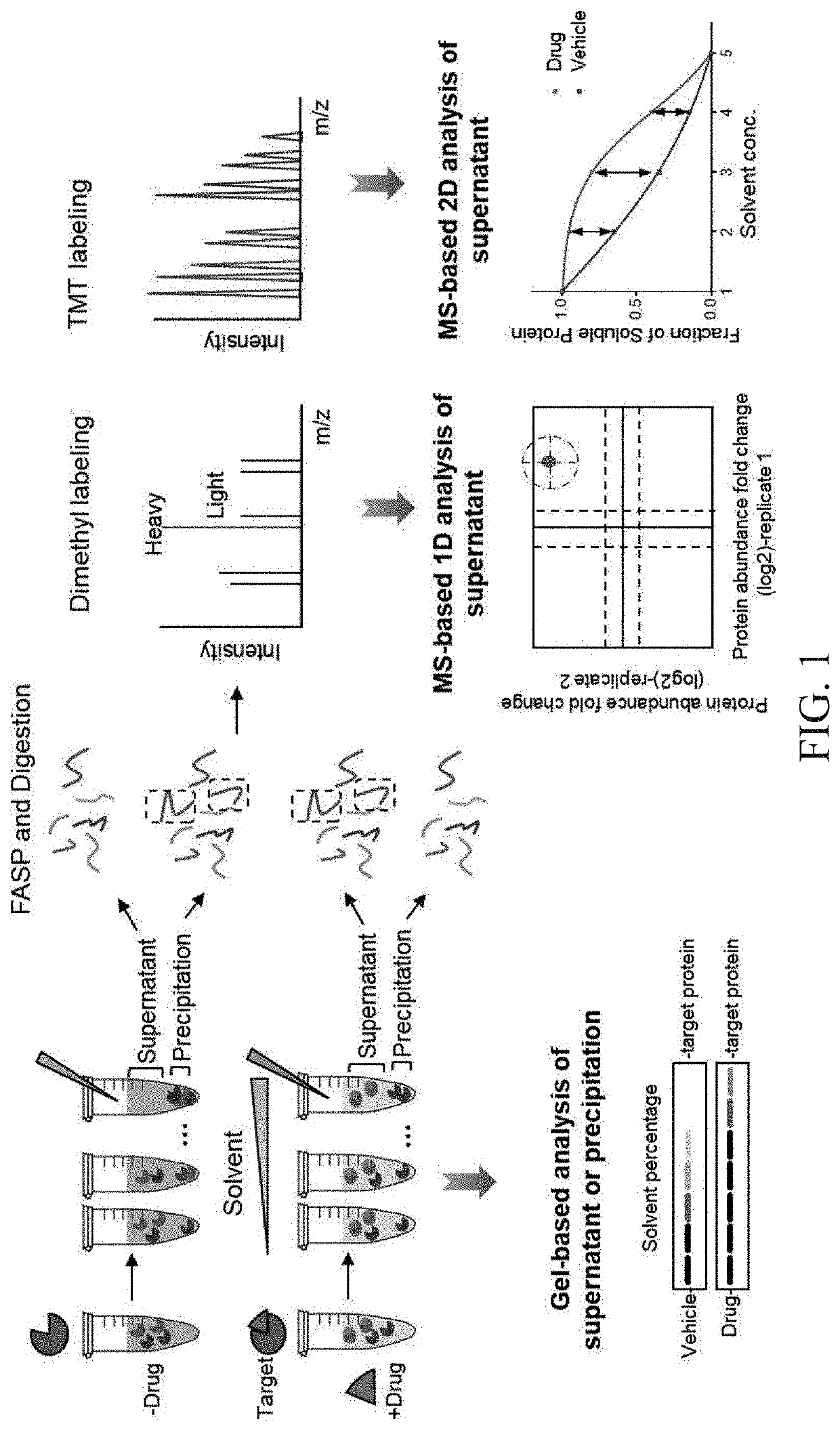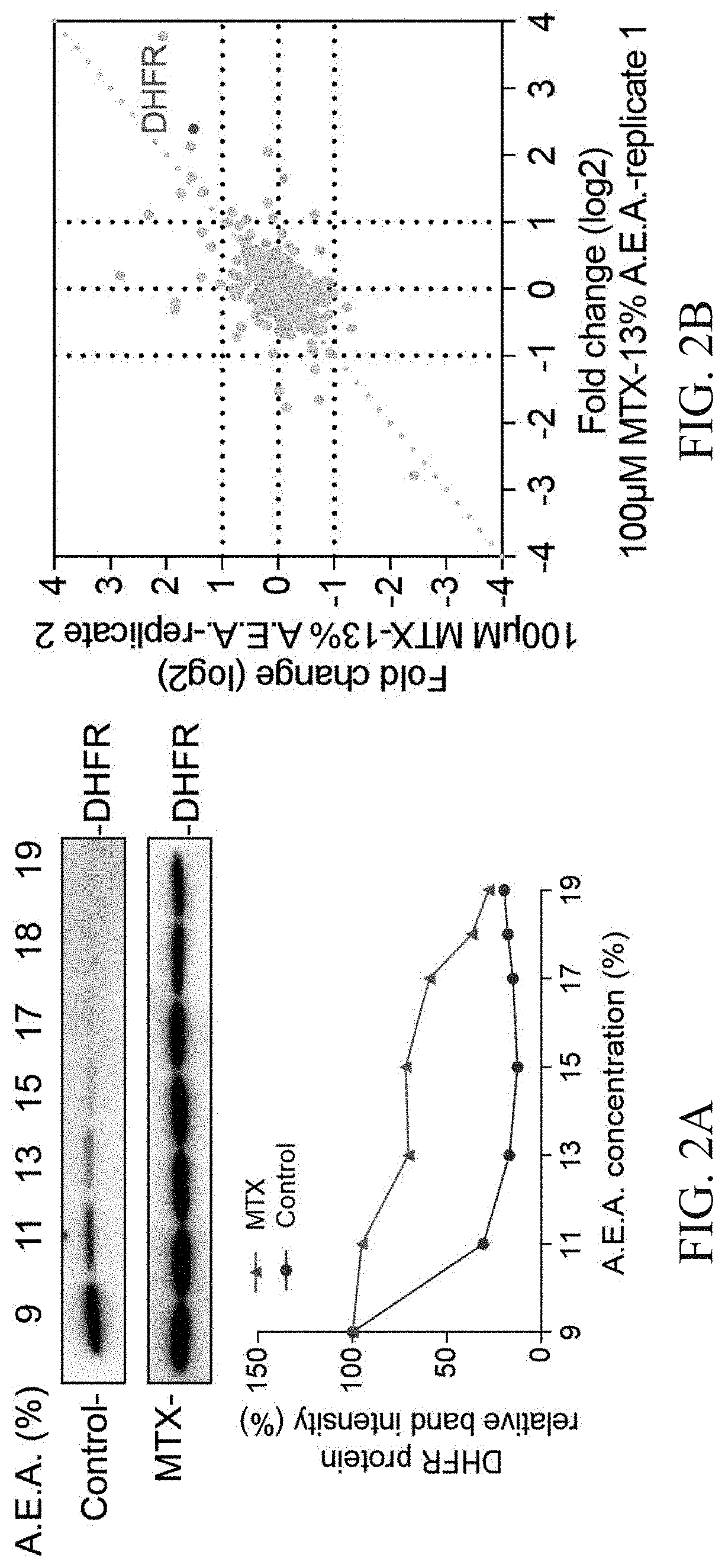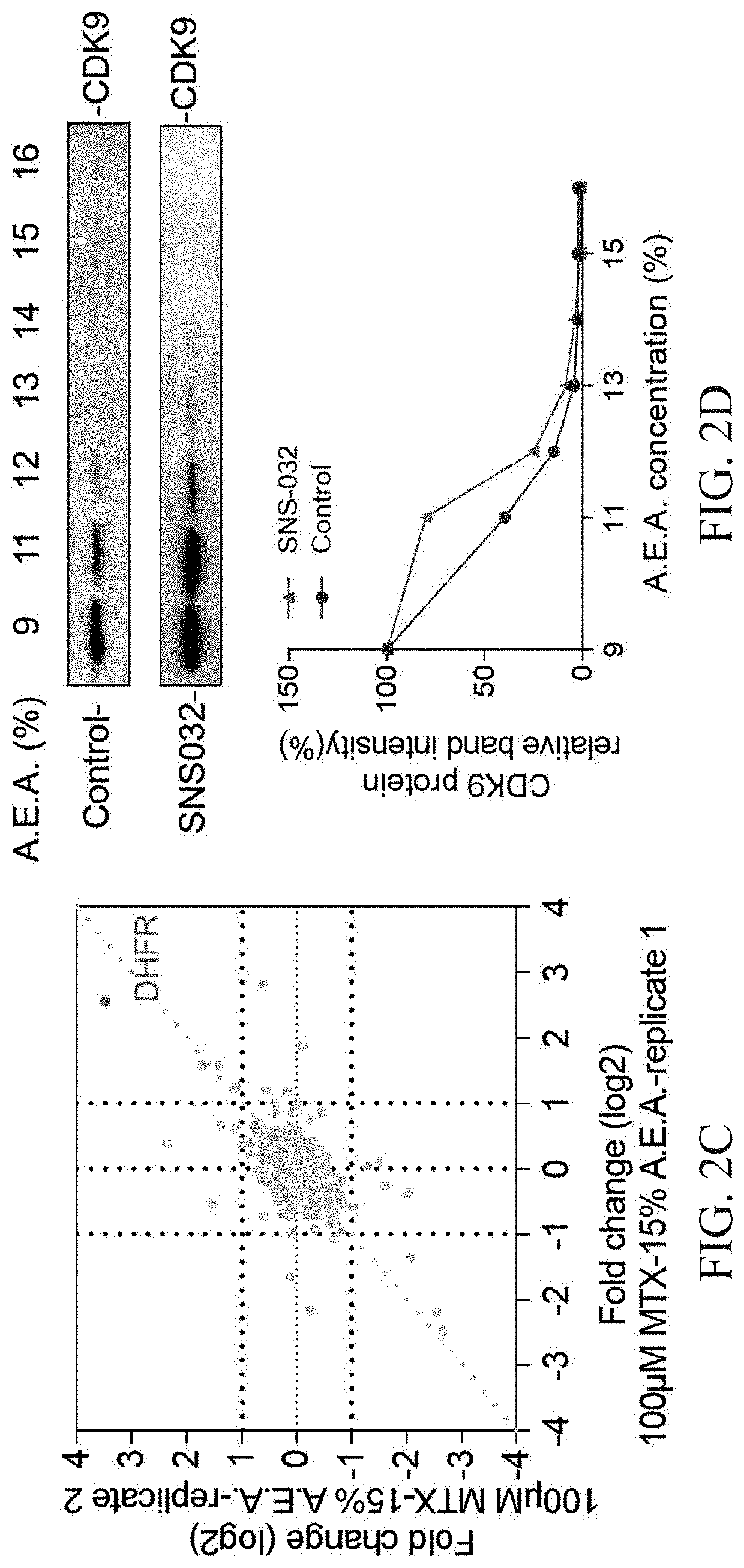Method for detecting interaction and affinity between ligand and protein
a technology of interaction and affinity, applied in the field of drug target discovery, can solve the problems of high false positive identification of targets, unsuitable for weak target identification, bottleneck in drug target identification, etc., and achieve high specific and high false positive rate, and high throughput of sip method
- Summary
- Abstract
- Description
- Claims
- Application Information
AI Technical Summary
Benefits of technology
Problems solved by technology
Method used
Image
Examples
example 1
Validation of the Solvent Mixture-Based SIP Method by Model Drugs MTX
[0048]293T cell lysate was divided into two aliquots of 700 ul, one aliquot was treated with a final concentration of 100 μM MTX as drug group, and the other aliquot was treated with an equivalent amount DMSO alone as the control group, followed by the incubation for 20 min at 10 rpm at room temperature. The cell lysates of the drug-treated group and the control group were divided into 7 EP tubes (100 μL in each EP tube), respectively, and new preparation of different percentages solvent mixtures A.E.A. (the final volume percentage of 9%, 11%, 13%, 15%, 16%, 17% and 18%) was added to the 7 samples to initiate protein precipitation. Subsequently, the mixtures were equilibrated at 800 rpm for 20 min at 37° C. for precipitation. The supernatants were collected after the mixtures were centrifuged at 20,000 g for 10 min at 4° C. One portion was used for western blotting analysis and the left portion was used for MS-base...
example 2
Validation of the Solvent Mixture-Based SIP Method by Kinase Inhibitor SNS-032
[0052]The process and conditions are the same as in Example 1. The difference from Example 1 is that the drug used for verification of known targets is the kinase inhibitor SNS-032 (Selleck, Houston, Tex.). 293T cell lysate was divided into two 700 ul aliquots, one aliquot was treated with the final drug concentrations of 100 μM SNS-032 as drug group and the other aliquot was treated with an equivalent amount DMSO alone as the control group, followed by the incubation for 20 min at 10 rpm at room temperature. The cell lysates of the drug group and the control group were divided into 7 EP tubes (100 μL in each EP tube), respectively, and new preparation of different percentages solvent mixtures A.E.A. (the final volume percentage of 9%, 11%, 12% 13%, 14%, 15%, and 16%) was added to the 7 samples to initiate protein precipitation. Subsequently, the mixtures were equilibrated at 800 rpm for 20 min at 37° C. f...
example 3
Identify of Protein Kinase Targets of Pan-Kinase Inhibitor Staurosporine by Solvent Mixture-Based SIP Method
[0055]The above drugs only have a few known target proteins. Next, the inhibitor staurosporine, which is known to have multiple protein kinase targets, was selected to verify the feasibility of the solvent mixture-based SIP method. 293T cell lysate was divided into two 300 ul aliquots, one aliquot was treated with final concentration 20 μM staurosporine (Selleck, Houston, Tex.) as drug group and the other aliquot was treated with an equivalent amount DMSO alone as the control group, followed by the incubation for 20 min at 10 rpm at room temperature. The cell lysates of the drug group and the control group were divided into 3 EP tubes (100 μL in each EP tube), respectively, and new preparation of different percentages solvent mixtures A.E.A. (the final volume percentage of 15%, 16%, and 17%) was added to the 3 samples to initiate protein precipitation. Subsequently, the mixtur...
PUM
| Property | Measurement | Unit |
|---|---|---|
| temperature | aaaaa | aaaaa |
| temperature | aaaaa | aaaaa |
| w/w | aaaaa | aaaaa |
Abstract
Description
Claims
Application Information
 Login to View More
Login to View More - Generate Ideas
- Intellectual Property
- Life Sciences
- Materials
- Tech Scout
- Unparalleled Data Quality
- Higher Quality Content
- 60% Fewer Hallucinations
Browse by: Latest US Patents, China's latest patents, Technical Efficacy Thesaurus, Application Domain, Technology Topic, Popular Technical Reports.
© 2025 PatSnap. All rights reserved.Legal|Privacy policy|Modern Slavery Act Transparency Statement|Sitemap|About US| Contact US: help@patsnap.com



